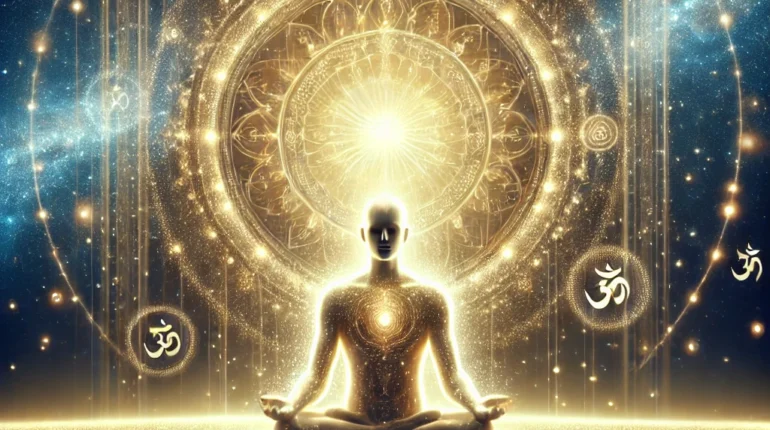
Introduction
The phrase Aham Brahmasmi originates from the Brihadaranyaka Upanishad and is one of the four great Mahavakyas (grand statements) of Advaita Vedanta. Translated as “I am Brahma,” it conveys a deep realization of one’s divine nature, dissolving the illusion of separateness and awakening an individual to their infinite potential.
What Does Aham Brahmasmi Mean?
At its core, Aham Brahmasmi signifies the unity of the individual self (Atma) with the ultimate reality (Brahma). In Advaita Vedanta, Brahman is the supreme, formless, and eternal truth beyond all dualities. It is the source of all existence, transcending time, space, and causation. The realization of this truth brings liberation (moksha), freeing one from the cycle of birth and death (samsara).
How to Achieve Self-Realization
Understanding Aham Brahmasmi is not just an intellectual process—it is an experiential journey. The path to self-realization involves deep introspection, spiritual discipline, and dedication. Below are some essential practices that help in achieving this realization:
1. Jnana Yoga (Path of Knowledge)
This path emphasizes self-inquiry (vichara) and contemplation on the nature of the self. Asking “Who am I?” through deep meditation leads to the realization of oneness with Brahman.
2. Meditation and Mindfulness
Practicing stillness and detaching from worldly distractions helps one experience the underlying unity of existence. Regular meditation enhances clarity and inner peace.
3. Selfless Service (Seva)
Recognizing the divine in all beings fosters acts of love, compassion, and service, breaking the illusion of separation. Performing selfless service purifies the mind and deepens spiritual awareness.
4. Satsang (Company of the Wise)
Engaging with enlightened teachers and studying sacred texts reinforces higher understanding. Wisdom shared by realized beings accelerates the journey to self-discovery.
Transformational Impact of Aham Brahmasmi
When one truly embraces Aham Brahmasmi, life transforms in profound ways:
- Fearlessness: Understanding that we are beyond birth and death removes all fear, fostering a life of confidence.
- Compassion: Seeing the same divine essence in all beings fosters unconditional love, empathy, and kindness.
- Inner Peace: Realizing that external events cannot affect the eternal self brings unshakable tranquility and balance.
- Freedom from Ego: The false sense of identity dissolves, allowing one to live in harmony with existence, free from arrogance and attachments.
How to Apply Aham Brahmasmi in Daily Life
This philosophy is not just for monks or spiritual seekers—it is for everyone. Here’s how you can incorporate it into your daily routine:
- Practice Gratitude: Recognize the divine essence in yourself and others daily.
- Meditate Regularly: Spend time in quiet reflection to connect with your inner self and develop self-awareness.
- Engage in Selfless Acts: Help others without expecting anything in return, promoting love and unity.
- Stay Mindful: Be present in every moment, observe your thoughts, and cultivate self-awareness.
- Embrace Positive Affirmations: Repeating affirmations like “I am divine,” “I am infinite,” or “I am connected to the universe” reinforces the realization of Aham Brahmasmi.
Conclusion
By embracing Aham Brahmasmi, we awaken to our true nature—one of boundless love, wisdom, and peace. This realization is not a distant goal but an ever-present truth waiting to be discovered within. The journey to self-realization is the journey to ultimate freedom.
By practicing these principles, you can unlock your highest potential, cultivate a positive mindset, and live a more fulfilling life. Start your journey to self-discovery today and experience the divine within.
